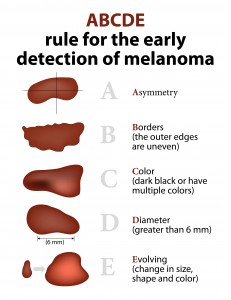There’s no such thing as a healthy tan.
Dr. Jane Grant-Kels, UConn Health dermatologist, has been saying it for years.
“All a tan is, whether from sunlight or a tanning parlor, is physical evidence of damaging ultraviolet rays on your skin,” she says. “It has a cumulative effect over your lifetime, and is a path to skin cancer and photoaging.”
Grant-Kels, who recently retired as chair of the UConn Health Department of Dermatology but remains active seeing patients and directs the UConn Cutaneous Oncology Center and Melanoma Program, has several reminders about avoiding skin cancer.
- Wear a hat, protective clothing and sunscreens to reduce sunlight exposure, particularly between 10 a.m. and 4 p.m.
- Use a sunscreen that blocks both UVA and UVB rays, is water proof and has at least a sun protection factor (SPF) rating of 30 or higher. Also apply the sunscreen at least 20 minutes before you leave the house.
- Start with at least enough sunscreen to fill a shot glass and be sure to re-apply every two hours, especially after swimming perspiring, or showering.
- A tanning booth is NOT a safe alternative to sun exposure.
- While fairer-skinned people are more vulnerable to the damaging effects of sunlight, darker-skinned people are by no means immune from them.
- Do periodic self-checks for changes in your skin including new or changing moles or lesions that are not healing.
 A suspicious mole is not always a sign of skin cancer, but it could be. To understand what makes a lesion suspicious, keep in mind the first five letters of the alphabet:
A suspicious mole is not always a sign of skin cancer, but it could be. To understand what makes a lesion suspicious, keep in mind the first five letters of the alphabet:
“A is asymmetry, which means if you draw a line through the lesion you couldn’t fold it over and have it be symmetrical,” Grant-Kels says. “B is border irregularity, C is for color variation, D is for changing diameter, and E is for evolving. A lesion that is changing or evolving is something that should be checked out.”
And if the idea of a skin biopsy keeps you away from the doctor, know that UConn dermatologists have access to technology that produces an image of the skin histology and enables analysis of the skin at the cellular level, all without the need to remove any tissue.
“In many cases I am able to diagnose most skin cancers versus a benign lesion,” Grant-Kels says. “We can look through the skin without doing a biopsy, and it gives me the ability to see more pathology than I can even under the microscope.”
May is National Skin Cancer Detection and Prevention Month, according to the American Cancer Society. The American Academy of Dermatology designates the first Monday in May as Melanoma Monday. Melanoma is the deadliest form of skin cancer.
More information about dermatology at UConn Health is available at http://health.uconn.edu/dermatology or by calling 860-679-4600.



